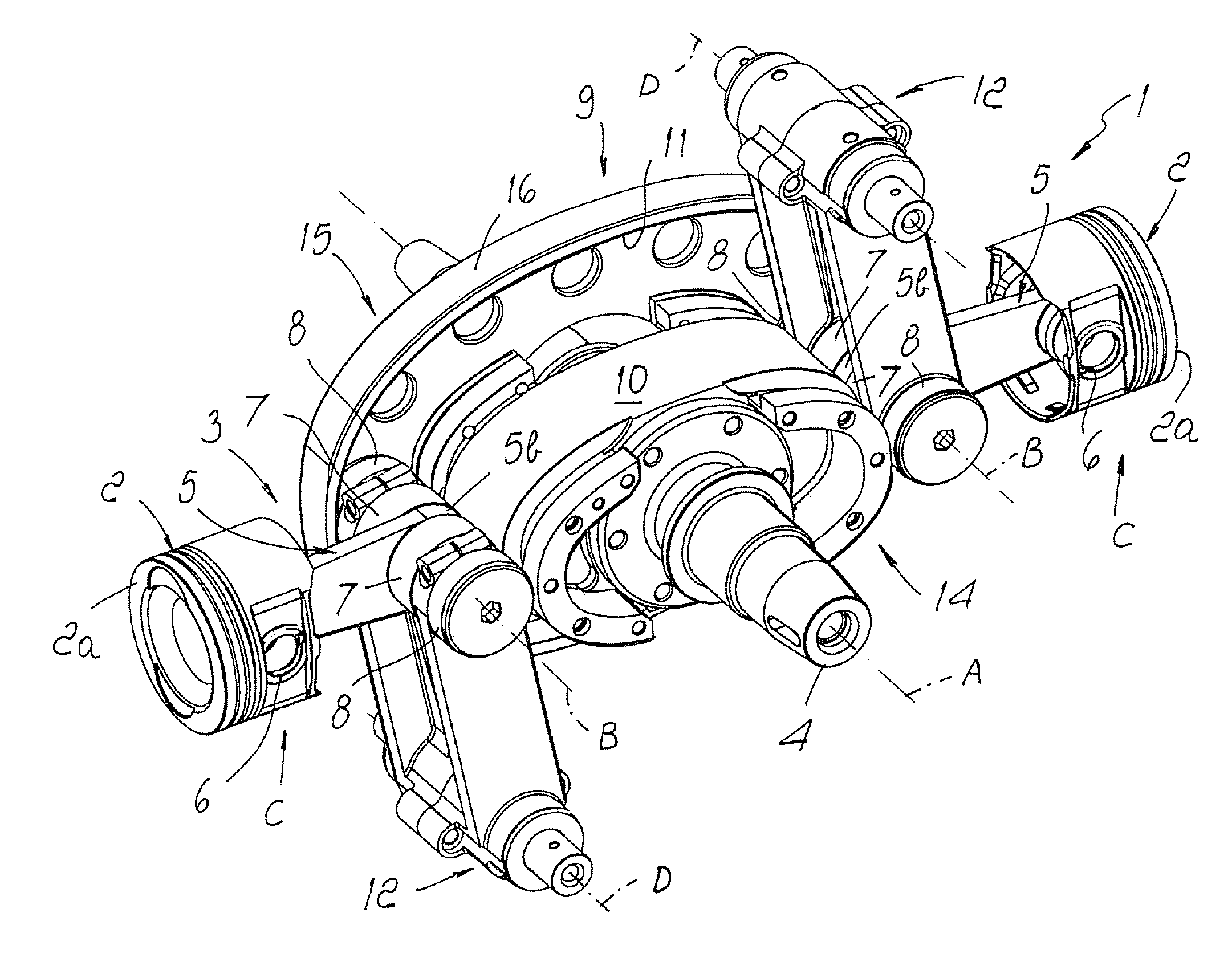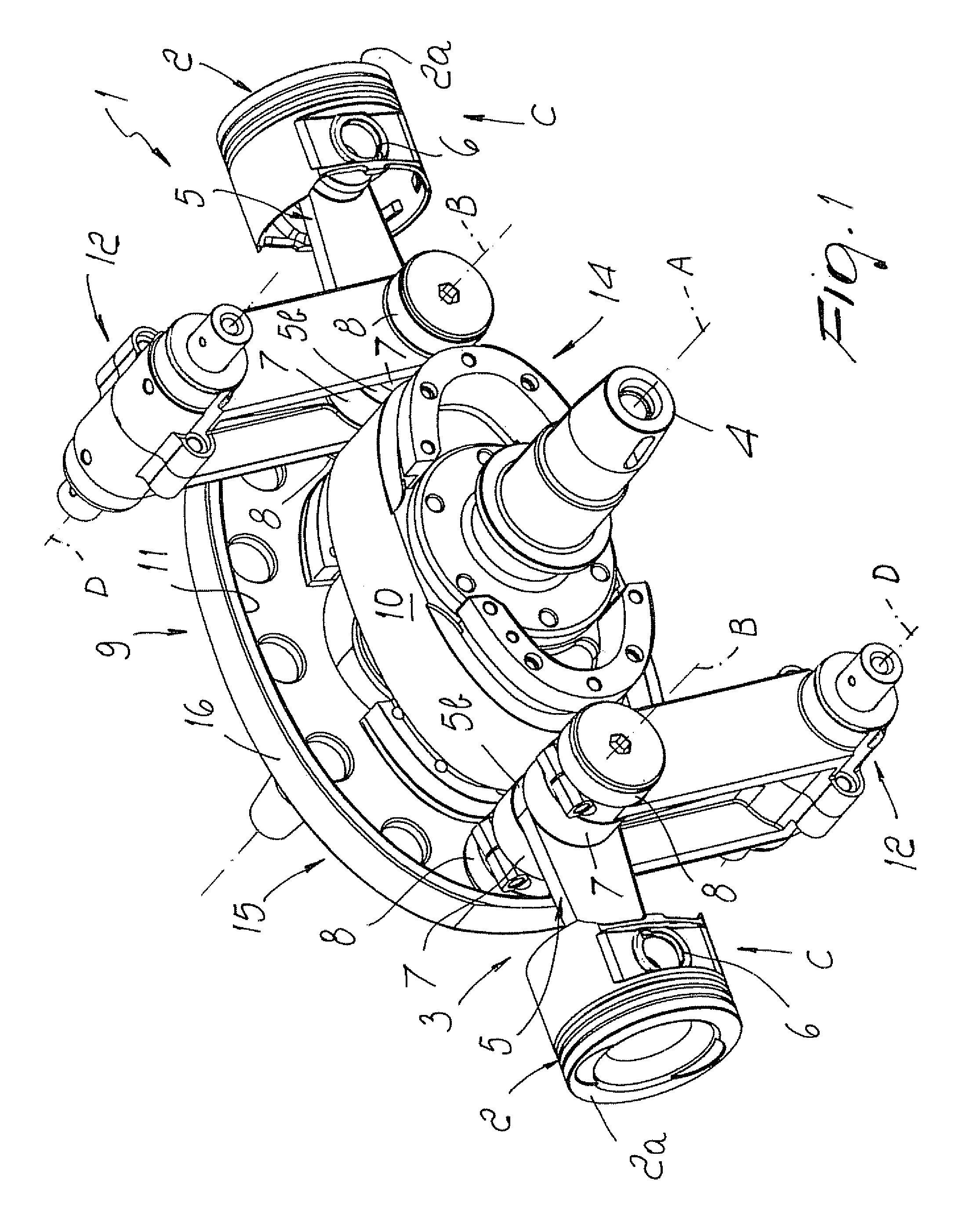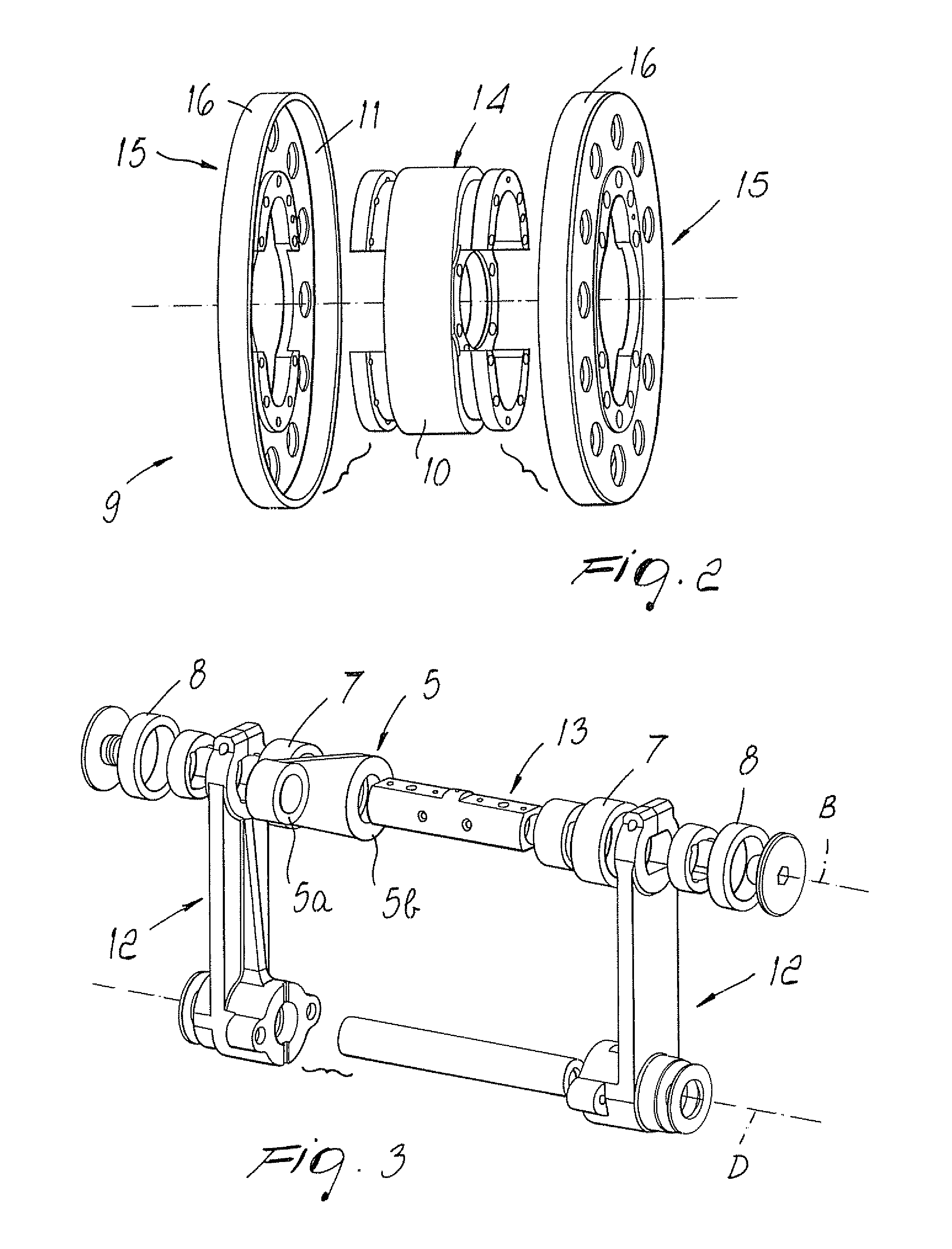Internal-Combustion Engine With Guided Roller Piston Drive
a technology of internal combustion engine and piston drive, which is applied in the direction of positive displacement engine, bearing, shaft and bearing, etc., can solve the problems of unquestionable loss of thermodynamic efficiency of the actual work cycle of the engine relative to the efficiency of an ideal thermodynamic cycle, and unfavorable internal combustion engine. , to achieve the effect of improving reciprocating operation, high specific power, and high thermal and mechanical efficiency
- Summary
- Abstract
- Description
- Claims
- Application Information
AI Technical Summary
Benefits of technology
Problems solved by technology
Method used
Image
Examples
first embodiment
[0063]Again with reference to the engine 1, the rotating contoured body 9 (FIG. 2) comprises a body 14, on the outer perimetric surface of which the pusher circuit 10 is provided, and two coupled bodies 15, which are substantially parallel thereto and are rigidly associated with its opposite faces.
[0064]A respective track 16 is formed in relief on the faces of the coupled bodies 15 that are directed toward the body 14, and its internal profile forms a return circuit 11.
[0065]In the alternative embodiment, shown in FIGS. 6 and 7, the second end 5b of the push rod 5 is fork-shaped, each prong being provided with a respective eye, which supports a respective supporting shaft 13; the two supporting shafts 13 are mutually coaxial.
[0066]A respective pusher roller 7 and a respective return roller 8 are mounted on each of the two pins 13; in the sequence of the pusher rollers 7 and of the return rollers 8, the former are end rollers and the latter are interposed between them. In this case, ...
second embodiment
[0067]Again with reference to the engine 1, the rotating contoured body 9 can be constituted for example by a structural element 17, on each opposite face of which there are two circuit tracks in relief; a first circuit track 18 and a second circuit track 19, both of which are internal but on two different levels and are mutually concentric.
[0068]The profile of the two first internal circuit tracks defines the pusher circuit 10 and the profile of the two second internal circuit tracks defines the return circuit 11.
[0069]However, alternative embodiments are not excluded in which the number and arrangement of the pusher rollers 7 and of the return rollers 8 changes and accordingly the number and arrangement of the pusher circuits 10 and return circuits 11 changes, or in which the configuration of the push rod 5, of the guiding arms 12 and of the rotating contoured body 9 changes, each being possibly provided monolithically, in two or more parts, or in any other form that may allow to ...
PUM
 Login to View More
Login to View More Abstract
Description
Claims
Application Information
 Login to View More
Login to View More - R&D
- Intellectual Property
- Life Sciences
- Materials
- Tech Scout
- Unparalleled Data Quality
- Higher Quality Content
- 60% Fewer Hallucinations
Browse by: Latest US Patents, China's latest patents, Technical Efficacy Thesaurus, Application Domain, Technology Topic, Popular Technical Reports.
© 2025 PatSnap. All rights reserved.Legal|Privacy policy|Modern Slavery Act Transparency Statement|Sitemap|About US| Contact US: help@patsnap.com



